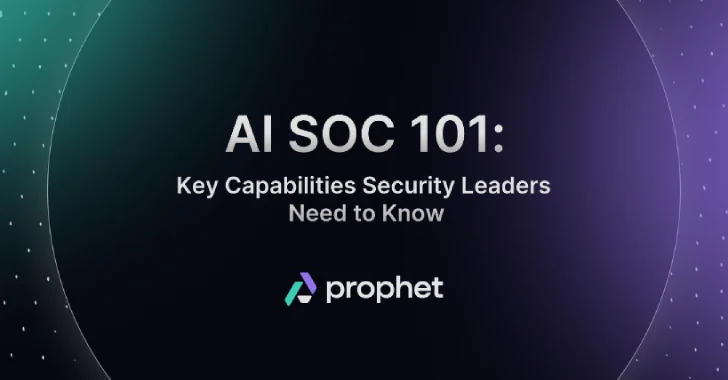Security operations have never been a 9-to-5 job. For SOC analysts, the day often starts and ends deep in a queue of alerts, chasing down what turns out to be false positives, or switching between half a dozen tools to piece together context. The work is repetitive, time-consuming, and high-stakes, leaving SOCs under constant pressure to keep up, yet often struggling to stay ahead of emerging threats. That combination of inefficiency, elevated risk, and a reactive operating model is exactly where AI-powered SOC capabilities are starting to make a difference.
Why AI SOC is gaining traction now
The recent Gartner Hype Cycle for Security Operations 2025 (download a complimentary copy) recognizes AI SOC Agents as an innovation trigger, reflecting a broader shift in how teams approach automation. Instead of relying solely on static playbooks or manual investigation workflows, AI SOC capabilities bring reasoning, adaptability, and context-aware decision-making into the mix.
SOC teams report that their most pressing challenges are inefficient investigations, siloed tools, and a lack of effective automation. These issues slow response and increase risk. The latest SANS SOC Survey underscores this, showing these operational hurdles consistently outpace other concerns. AI-driven triage, investigation, and detection coverage analysis are well-positioned to address these gaps head-on.
AI’s biggest wins in the SOC
An AI SOC brings together a range of capabilities that strengthen and scale the core functions of a security operations center. These capabilities work alongside human expertise to improve how teams triage alerts, investigate threats, respond to incidents, and refine detections over time.
Triage at speed and scale
AI systems can review and prioritize every incoming alert within minutes, pulling telemetry from across the environment. True threats rise to the top quickly, while false positives are resolved without draining analyst time.
Faster, deeper investigations and response
By correlating data from SIEM, EDR, identity, email, and cloud platforms, AI SOC tools reduce mean time to investigate (MTTI) and mean time to respond (MTTR). This shortens dwell time and limits the opportunity for threats to spread.
Detection engineering insights
AI can pinpoint coverage gaps against frameworks such as MITRE ATT&CK, identify rules that need tuning, and recommend adjustments based on real investigation data. This gives detection engineers a clear view of where changes will make the most impact.
Enabling more threat hunting
With less time spent working alert queues, analysts can shift to proactive threat hunting. AI SOC platforms with natural language query support make it easier to explore data, run complex hunts, and surface hidden threats.
Separating hype from reality
The AI SOC market is filled with sweeping claims about fully autonomous SOC and instant results. While AI can automate large portions of tier 1 and tier 2 investigations and even support tier 3 work, it is not a replacement for experienced analysts. Complex, high impact cases still require human judgment, contextual understanding, and decision making.
The real value lies in shifting the balance of work. By removing repetitive triage and speeding investigations, AI frees analysts to focus on higher impact activities like advanced threat hunting, tuning detections, and investigating sophisticated threats. This is the work that improves both security outcomes and analyst retention.
Guiding principles for evaluating AI SOC capabilities
When assessing AI SOC solutions, focus on principles that determine whether they can deliver sustainable improvements to security operations:
- Transparency and explainability – The system should provide clear, detailed reasoning for its findings, allowing analysts to trace conclusions back to the underlying data and logic. This builds trust and enables informed decision making.
- Data privacy and security – Understand exactly where data is processed and stored, how it is protected in transit and at rest, and whether the deployment model meets your compliance requirements.
- Integration depth – The solution should integrate seamlessly with your existing SOC stack and workflows. This includes preserving the familiar user experience of tools like SIEM, EDR, and case management systems to avoid introducing friction.
- Adaptability and learning – AI should improve over time by incorporating analyst feedback, adapting to changes in your environment, and staying effective against evolving threats.
- Accuracy and trust – Evaluate not just the volume of work automated, but the precision and reliability of results. A tool that closes false positives at scale but misses real threats creates more risk than it solves.
- Time to value – Favor solutions that deliver measurable gains in investigation speed, accuracy, or coverage within weeks rather than months, without heavy customization or lengthy deployments.
The human and AI hybrid SOC
The most effective SOCs combine the speed and scale of AI with the contextual understanding and judgment of human analysts. This model gives people the capacity to focus on the work that matters most.
How Prophet Security aligns with this vision
Prophet Security helps organizations move beyond manual investigations and alert fatigue with an agentic AI SOC platform that automates triage, accelerates investigations, and ensures every alert gets the attention it deserves. By integrating across the existing stack, Prophet AI improves analyst efficiency, reduces incident dwell time, and delivers more consistent security outcomes. Security leaders use Prophet AI to maximize the value of their people and tools, strengthen their security posture, and turn daily SOC operations into measurable business results. Visit Prophet Security to request a demo and see how Prophet AI can elevate your SOC operations.
Source: thehackernews.com…


Leave a Reply